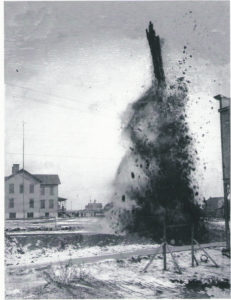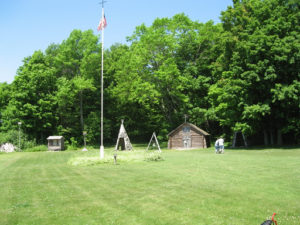The earliest reference to South Manistique or “South-town” is from the early 1880’s. The town was developed around the Hall and Buell Lumber Company Mill. The following description of Southtown is from Earnest Williams: “Several houses in the town had four feet high fences around them to prevent the sand beach from blowing into the yards. All the streets were sand and grass was basically nonexistent.”
Hall and Buell lad lumber rights around Southtown and on Indian Lake. They cut the timber and floated it across Indian Lake to a “pull up” between Sunset and Harrison Beaches. From there it was loaded onto their own railroad and brought to the Southtown mill (The railroad crossed old U.S. 2 near the current location of WTIQ and the gas pipeline).


